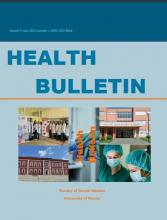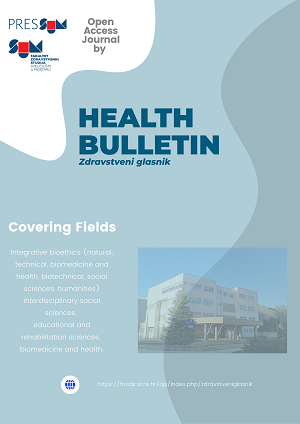THE IMPORTANCE OF DETERMINING THE VITAMIN D3 CONCENTRATION IN PATIENTS WITH TYPE 1 DIABETES
Keywords:
Vitamin D, diabetes mellitus type 1, childrenAbstract
Introduction: Many epidemiological studies have shown a connection between vitamin D deficiency and
increased incidence of type 1 diabetes. Objective: The aim of this study is to determine the impact of vitamin
D levels in children with newly diagnosed type 1 diabetes, taking into account the following parameters:
gender, place of residence, positive/negative family history, comorbidities. Respondents and methods: The
research was conducted through a retrospective analysis of the medical records of the Children's Disease
Clinic of the University Clinical Hospital Mostar. The research included a sample of 30 children diagnosed
with type 1 diabetes, treated at the Department of Endocrinology and Metabolic Diseases, Clinic for
Children's Diseases, University Clinical Hospital Mostar. Results: The research consisted of 30 participants
treated at the Department of Endocrinology and Metabolic Diseases, Clinic fo Children's Disease. The
sample consists of 40% (n=12) male respondents and 60% (n=18) female respondents. Slightly more than
half of the respondnents, 53.3% (n=16) lived in the city, while the remaining 46.7% (n=14) lived in the
countryside. Statistical analysis of the patients with newly diagnosed type 1 diabetes, showed that there were
significantly more patients (70%) with positive family history of diabetes mellitus than those with negative.
In this study, 26.7% (n=8) patients with newly diagnosed type 1 diabetes had comorbidities, compared to
73.3% patients without comorbidities (n=22). Patients living in rural areas had significantly higher values
of vitamin D3 concentration compared do those who lived in urban areas. Conclusion: 83.3% of subjects
with newly diagnosed type 1 diabetes have a reduced level of vitamin D at the time of diagnosis. Numerous
studies have shown a link between vitamin D deficiency and an increased risk of developing diabetes. Due
to all of the above, supplementation and control of vitamin D is recommended, especially in children who
have a risk in the form of positive family history and comorbidities such as Hashimoto's thyroiditis, and
celiac disease from an early age for the purpose of prevention.















